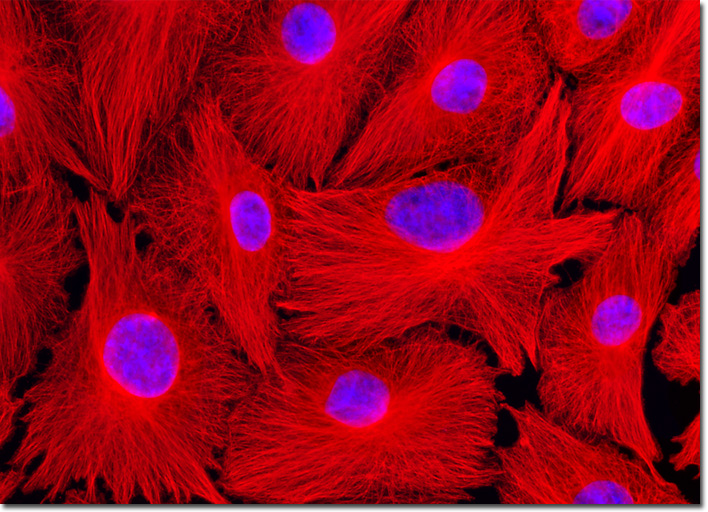Fluorescence Digital Image Gallery
Normal African Green Monkey Kidney Fibroblast Cells (CV-1)
|
Since the body can undergo substantial harm if toxic substances are allowed to accumulate in the blood, proper functioning of the kidneys is vital to health. Correspondingly, medical understanding of the many renal diseases and disorders that may occur is a matter of significant consequence. Among the most common kidney problems reported is nephritis, a condition that often appears shortly after other infections have taken hold on the body and which is characterized by glomeruli inflammation. Urinary tract infections and kidney stones are also frequently occurring renal conditions. Less common, but much more serious, is the disease nephrosis. This degeneration of kidney tissue that is characterized by lesions is often associated with a broad array of other disorders, including high blood pressure and diabetes. Frequently, nephrosis is not diagnosed until the condition is so far advanced that kidney failure takes place and wastes have accumulated in the body to a dangerous extent. The culture of African green monkey kidney fibroblasts that appears in the digital image above was immunofluorescently labeled with primary anti-tubulin mouse monoclonal antibodies followed by goat anti-mouse Fab fragments conjugated to Rhodamine Red-X. In addition, the specimen was stained with DAPI (targeting DNA in the nucleus). Images were recorded in grayscale with a QImaging Retiga Fast-EXi camera system coupled to an Olympus BX-51 microscope equipped with bandpass emission fluorescence filter optical blocks provided by Omega Optical. During the processing stage, individual image channels were pseudocolored with RGB values corresponding to each of the fluorophore emission spectral profiles. |
© 1995-2025 by Michael W. Davidson and The Florida State University. All Rights Reserved. No images, graphics, software, scripts, or applets may be reproduced or used in any manner without permission from the copyright holders. Use of this website means you agree to all of the Legal Terms and Conditions set forth by the owners.
This website is maintained by our
|
